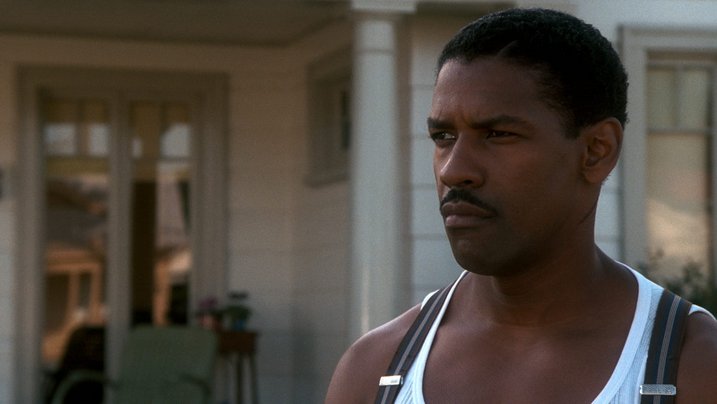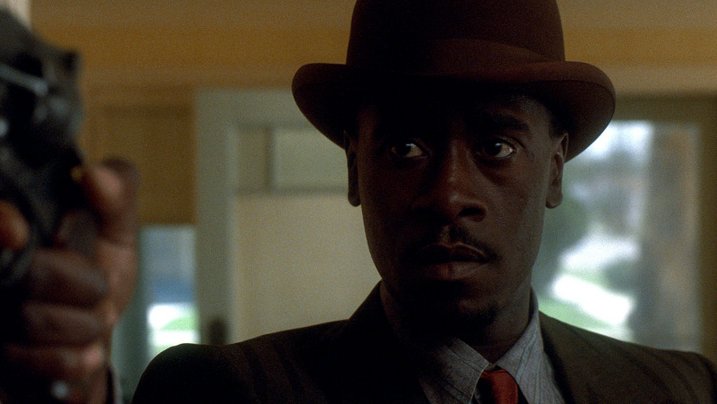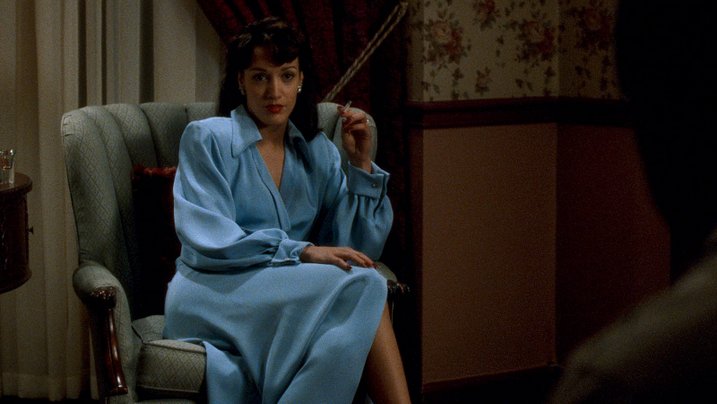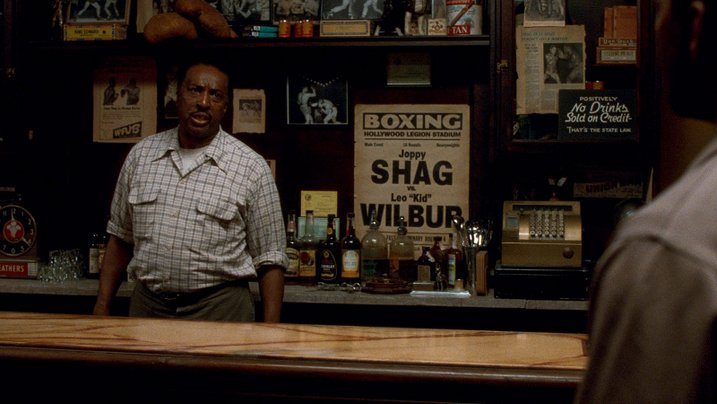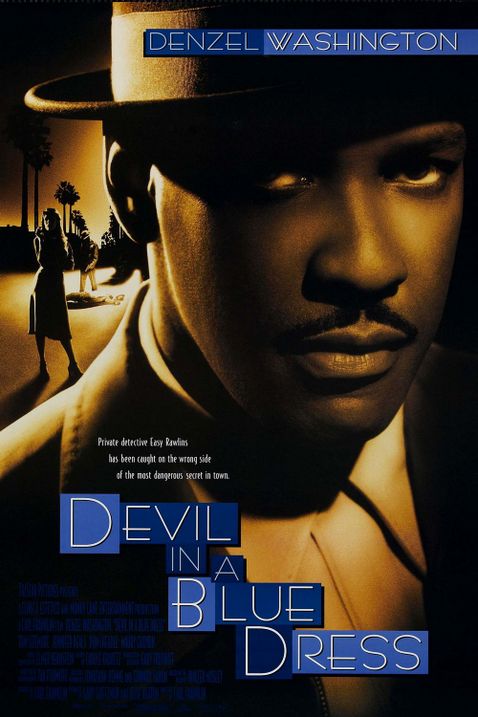Devil In A Blue Dress – The Criterion Collection (4K UHD Blu-ray Review)
 Seeing the announcement of Devil in a Blue Dress as an upcoming 4K release from the Criterion Collection was a great joy. An underperformer at the time of its release, only to find more appreciation as the years have gone why, this period thriller starring Denzel Washington brings together two major ideas – a neo-noir detective story starring a black lead and the social realism of what it meant to be black in 1948 America. Featuring several great performances and plenty of style, thanks to director Carl Franklin and his team, the film is terrific. Thanks to Criterion, the film now looks and sounds better than ever, with a couple of new extras to round out the package.
Seeing the announcement of Devil in a Blue Dress as an upcoming 4K release from the Criterion Collection was a great joy. An underperformer at the time of its release, only to find more appreciation as the years have gone why, this period thriller starring Denzel Washington brings together two major ideas – a neo-noir detective story starring a black lead and the social realism of what it meant to be black in 1948 America. Featuring several great performances and plenty of style, thanks to director Carl Franklin and his team, the film is terrific. Thanks to Criterion, the film now looks and sounds better than ever, with a couple of new extras to round out the package.
Film: 




Meant to be specifically focused on post-WWII Los Angeles, ex-GI Ezekiel “Easy” Rawlins (Washington) is attempting to live the American Dream. He owns his own car and lives in his own home in a good neighborhood. However, he has to pay the mortgage, and after getting laid off from his job, he finds himself entangled in a plot involving a missing woman, corrupt politicians, and murder. Feeling the pressures from all angles, Easy must use his wits to find the truth and make it out of this situation with his head above water. Fortunately, he’ll have some help from his livewire, trigger-happy friend Mouse (Don Cheadle), but he too could be more trouble than he’s worth.
As noted, the film is doing two things at once. From a noir perspective, Franklin makes many exciting choices that evoke this genre without directly trying to copy it. For all the uses of shadows, a femme fatale, and the sense of mystery, Devil in a Blue Dress avoids many tropes. There are no shots of light coming through the Venetian blinds or rooms filled with smoke. The world is realized, and there are scenes featured that wouldn’t be out of place in a James Cagney movie. Still, there’s an understanding of how to move forward with the genre instead of being anchored down by it.
This is best explored through the other key (and very obvious) aspect of the film – telling the story through the lens of black characters and filmmakers. Based on the first novel in author Walter Mosley’s hardboiled mystery series featuring Easy Rawlins, the audience is firmly placed in the era and does not shy away from what comes with characters faced with a segregated society. We watch how uneasy Easy is when forced to cross color lines and deal with the sundown towns. Given the nature of where the story goes, seeing the way Easy must align with certain individuals, only to have to contend with the way racial realities will continually provide certain limits, offers new challenges for the way a noir can operate when considering the obstacles the lead character will have to overcome.
At the same time, shot in color and featuring a wealth of supporting black characters, seeing the people Easy can comfortably associate with has its benefits as well. Franklin and cinematographer Tak Fujimoto know how to frame scenes of tension vs. the more relaxed moments set in bars, jazz clubs, and Easy’s own home. The way Easy navigates both worlds was always going to be a vital component of this story, and finding subtle ways to hint at what’s ideal and what could be dangerous is a strong asset that only expands my regard for this film on each viewing.
Of course, there are also just the facts to look at. The story is a strong one. It has the twists and turns one would expect from this sort of mystery. It’s always been a shame that this film was not a bigger hit, given how cool it could have been to see Washington have his own detective series he could periodically revisit (instead, we’re stuck with Equalizer films as Washington’s only sequels). That said, how he manages to stumble his way into becoming a private detective allows this to play as a solid origin film. And, as expected, Washington brings the suaveness needed as a character who isn’t always ahead the curve but finds his way out of problem scenarios.
One of those ways out is the wild card that is Don Cheadle, who explodes into the film around the halfway mark, and practically takes it over. It’s amazing that Washington and Cheadle haven’t made more films together, as they sure are great. That said, this is one terrific breakout role for the man, as his character, Mouse, brings so much danger and levity to a film that was already very compelling. His presence even adds a moral quandary for Easy’s character to consider, given what usually results from Mouse’s actions.
Other characters are also effective. Tom Sizemore brings seedy menace as a man who clears up loose ends. Jennifer Beals is properly-suited as the mysterious missing woman. Maury Chaykin is the exact character actor needed to play the mayoral candidate with a dirty secret. These performers, among others, all add to the level of authenticity Devil in a Blue Dress strives for in presenting an old-fashioned story given a fresh sort of feeling.
I’ve long been a champion of this film, as it’s precisely the kind of push forward I like to see in a studio film. Taking old conventions and finding ways to update them is what to do when so much talent is available to accomplish something special. Fortunately, the film not only has a near-timeless quality to what it has to say and how it looks while doing it, but it’s also a very entertaining neo-noir. It asks questions and doesn’t tie everything up neatly. At the same time, there are movie stars, gun fights, and more to provide a certain level of spectacle. It’s like watching jazz in movie form.
Video: 




Encoding: HEVC / H.265
Resolution: 2160p
Aspect Ratio: 1.85:1
Layers: BD-100
Details: This new digital transfer was created in 4K resolution on a Scannity film scanner from the 35 mm original camera negative.
Clarity/Detail: This transfer is excellent. I’ve seen this film in various presentations over the year, and it’s a real trip to see an incredibly sharp and vibrant version. The power of 4K just doesn’t stop being astounding when it comes to these older releases (yes, 1995 isn’t THAT old, but still). Seeing the look of Easy’s house or the indoor locations such as the bar allows a deeper register of the detail that has gone into producing settings fit for this era. Thanks to this transfer, seeing characters on the street allows for more acknowledgment of the effort put into recreating 1948 Los Angeles. That level of clarity does nothing more than benefit this modestly budgeted film that had plenty going for it.
Depth: There’s a sequence where Easy goes up some stairs, and you can briefly see out the window that’s behind some characters when he emerges in a room. The effort was taken to have the cars and the life outside that room still going on, and it’s thanks to things like the depth that allows the viewer to comprehend this sort of thing. There’s no flatness to be found in the rich world provided by this film.
Black Levels: The noir-ish feel of the film allows for plenty of darker scenes taking place at night, outdoors, and they look great. Shadow work and more are all handled well for this disc. Compared to the previous Blu-ray I own, there’s such a deep, inky feel to how the black levels look without having to compensate.
Color Reproduction: There are some key areas where colors are allowed to pop. While not a wide range to focus on, enough is going on for these moments to come through well. Most notably, the costume design is purposefully rendered a bit dull, only for Beals’ character to light up more with the literal blue dress she wears.
Flesh Tones: The detail level seen in the actual characters is impressive, given the many close-ups on the faces of people like Washington in some crucial moments.
Noise/Artifacts: The film looks nice and clean, with no issues in sight.
–
Audio: 




Audio Format(s): English DTS-HD Master Audio 5.1
Subtitles: English SDH
Details: The 5.1 surround mix was remastered from the original six-track DME magnetic sources.
Dynamics: This is a fantastic lossless track that properly emphasizes all that matters, such as the music, the fantastic score by Elmer Bernstein, along with the balance of so many characters emersed in this noir-ish environment.
Low-Frequency Extension: There are a few areas where the subwoofer gets a chance to shine, thanks to some of the action and more musically-driven moments.
Surround Sound Presentation: There are a lot of areas where the spread of the sound is essential, given the environment s these characters are in. The various channels work the way they need to in order to build the mood.
Dialogue Reproduction: Everyone is heard loud and clear.
–
Extras: 




Featuring a couple of new featurettes, along with some of the previous features from older releases, there are plenty of worthwhile supplements to add additional context, information, and more in regards to learning about the production and how it stands up today, according to those who worked on it. Still a shame to have no real word from Washington about this film (though it’s not like he’s not busy, let alone cheap to get for retrospective interviews), but at least there’s more to go on, thanks to people like Cheadle, Franklin, and Mosley.
- Commentary with Director Carl Franklin (available on the 4K and Blu-ray disc) – Originally recorded in 1998, Franklin has a great time discussing all aspects of the film while keeping many of his comments fairly scene-specific. His thoughts on the film’s symbolism and how he points out some finer details of the story make this a strong track.
- Don Cheadle and Carl Franklin (HD, 36:45) – Listen, I think Don Cheadle is an incredibly likable personality, so him being interviewed or having a discussion with most people is generally entertaining. That, of course, proves to be true in this new conversation with Franklin, an old friend of his (Cheadle starred in his thesis film), as the two dig into a lot about the unique qualities of the film.
- Don Cheadle Screen Test (SD, 14:00) – A look at Cheadle’s audition process, which is quite entertaining as far as seeing this energy in this form.
- Attica Locke and Walter Mosley (HD, 25:05) – Another new conversation, this time featuring novelist and critic Locke and author/screenwriter Mosley. The two have plenty to delve into as far as the nature of this sort of story, how it got made, and more.
- Noir City Chicago (HD, 25:58) – Recorded at the Music Box Theater in Chicago back in 2018, this archival supplement features film noir expert Eddie Muller and Carl Franklin discussing the style of Devil in a Blue Dress, Franklin’s other work, and noir in general.
- Trailer (HD, 2:28)
- PLUS – An essay by critic Julian Kimble
–
Summary: 




Devil in a Blue Dress is a film well worth anyone’s time if they are interested in seeing a solid detective story featuring one of the greatest actors out there. That it happens to have components concerning race relations is only a benefit in further exploring what this era was like for many who experienced it. On top of that, there’s a great sense of style, along with a terrific supporting performance from Don Cheadle to top it all off. Criterion’s 4K presentation is as excellent as one would hope, and the addition of new supplements further adds to the quality of this release. This is one to go for.
